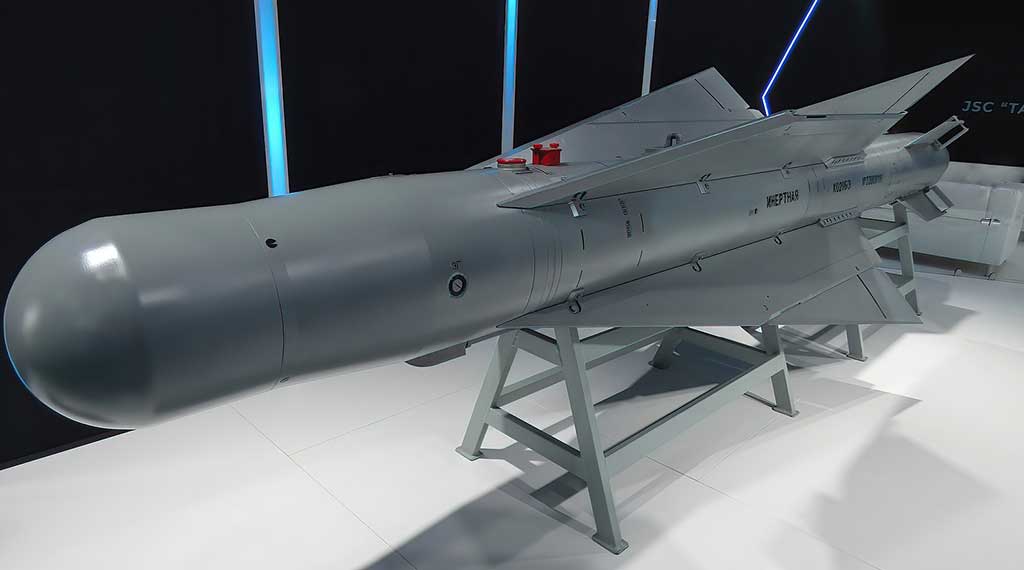
The Ukrainians are using US-supplied glide bombs and the Russians have their own.
These weapons are a new feature in the Ukraine war, and so far the Russians are winning the battle of glide bombs. The Ukrainians are calling the Russian glide bombs an “extremely big threat.”
The US has supplied Ukraine with two different types of glide bombs, the GLSDB (ground-launched small diameter bomb) produced by Boeing and Saab (Sweden), and the JDAM-ER (joint direct attack munition-extended range), manufactured by Boeing. Over the years Boeing has produced more than 500,000 JDAMs.
Russia has answered with two types of precision bombs, the Grom E2 and the UPAB-1500B-E.
Surprisingly, the US-supplied weapons have not been effective and have been intercepted by the Russians.
The Russian Grom E2 also has encountered mechanical or electronic faults. But the UPAB-1500B is another story: it appears to be effective and reliable in limited use. Ukraine has not been able to jam or shoot down UPAB bombs so far.
There is a difference between a glide bomb and a guided bomb. A guided bomb is directed to its target from the cockpit of the aircraft releasing it. The bomb is steerable. A glide bomb differs in that it is released and glides to its target. While it can be controlled by a pilot or copilot, more typically it operates autonomously once it is released.
Guided bombs go back as early as World War I and were used by the Germans in World War II against warships. The most successful was the Fritz-X built between 1943 and 1944. It was the first guided bomb to sink an Allied warship.
Guided bombs have very short ranges. Typically a guided bomb is controlled by the pilot or copilot of the launching aircraft and targeting is visual.
The US JDAM-ER, now in use in Ukraine, is a kit that is attached to an unguided (“dumb”) bomb. The kit includes the guidance package, which is a combination of a GPS receiver and an inertial navigation system, a control package and aerodynamic lift and control surfaces so the bomb can glide and maneuver.
The control package receives commands from the launching aircraft, but since the aircraft will be far from the target, the information on the target’s location has to be fed into the JDAM from an observer, either on the ground before takeoff or information coming from a drone.
JDAM-ER is not suitable for moving targets. JDAM has vulnerabilities via its data link and its GPS. The Russians claim they have successfully jammed JDAMs launched by Ukrainian aircraft and this claim has been confirmed in leaked classified documents.
If GPS is jammed (and not spoofed), the glide vehicle will depend solely on the on-board intertial navigation system. Low-end INS systems need to be constantly updated to retain operational accuracy. Thus a jammed bomb will drift off target and be ineffective. JDAM, for example, is said to go from an accuracy, expressed in circular error of probability, of 5 meters CEP to 30 meters.
One of the risks of these weapons is that, if jammed, they may hit vulnerable civilian installations (apartment houses, for example).
JDAM kits can be mounted on different size bombs, for example, 500-pound or 1,000-pound bombs. They can achieve long range provided the aircraft flies at a level of 35,000 feet or Level 35 (10,668 meters) giving a JDAM-ER a maximum range of 72 kilometers.
However, the aircraft not only must climb to altitude; it must be level and operating at top speed for the JDAM to have the speed it needs to reach its target. Unfortunately, among its aircraft Ukraine only has the MiG-29 that can operate at Level 35.
If the JDAM is on a lesser capable platform, such as an Su-25, it will have a considerably shorter range. Because the Russians operate advanced versions of the S-300 and a few S-400 air defense units in Ukraine, they can pick off the Ukrainian planes using air defense missiles, or challenge them in air-to-air engagements, making it difficult for Ukrainian pilots to get close enough to launch against enemy targets.
The US ground-launched small-diameter bomb (GLSDB) features a warhead of 250 pounds. It can be launched by HIMARS in Ukraine or from MLRS (multiple-launch rocket systems) or other launchers. Like the JDAM it is guided by GPS and INS. It is fired from a launch tube using a small rocket, which detaches whereupon the GLSDB glides to its target. It is slower than a standard HIMARS, meaning it is easier to intercept.
GLDSB has the same vulnerabilities as JDAM but its advantage is that it is ground-launched and if mounted on a shoot-and-scoot platform such as HIMARS, hard for Russian artillery or aircraft to locate. GLSDB has a claimed range of 150km.
The Russian UPAB-1500B-E is a glide bomb using Russia’s Glonass GPS system and an inertial guidance system. On March 24 a group of 10 Su-35 aircraft launched UPABs against targets in Sumy province, Ukraine. It is not clear how many UPABs were actually dropped, but the system worked.
- Trump and Ukraine: what Russia wants, what Trump could do - November 8, 2024
- North Korean troops in Kursk could backfire on Moscow, Pyongyang - November 1, 2024
- Secure enclaves: bad CHIPS Act idea wasting billions - August 12, 2024
